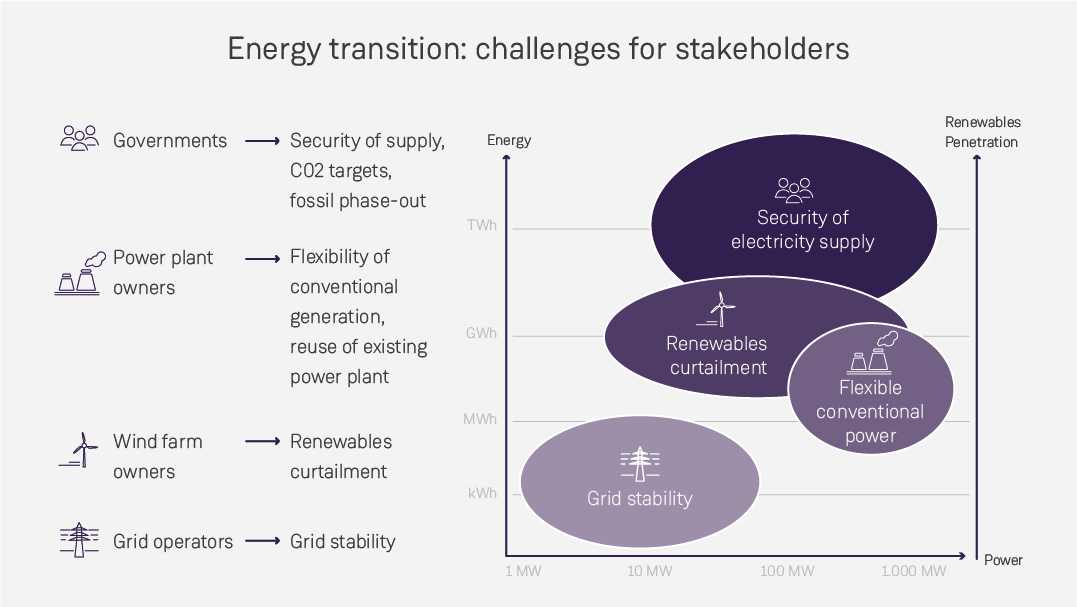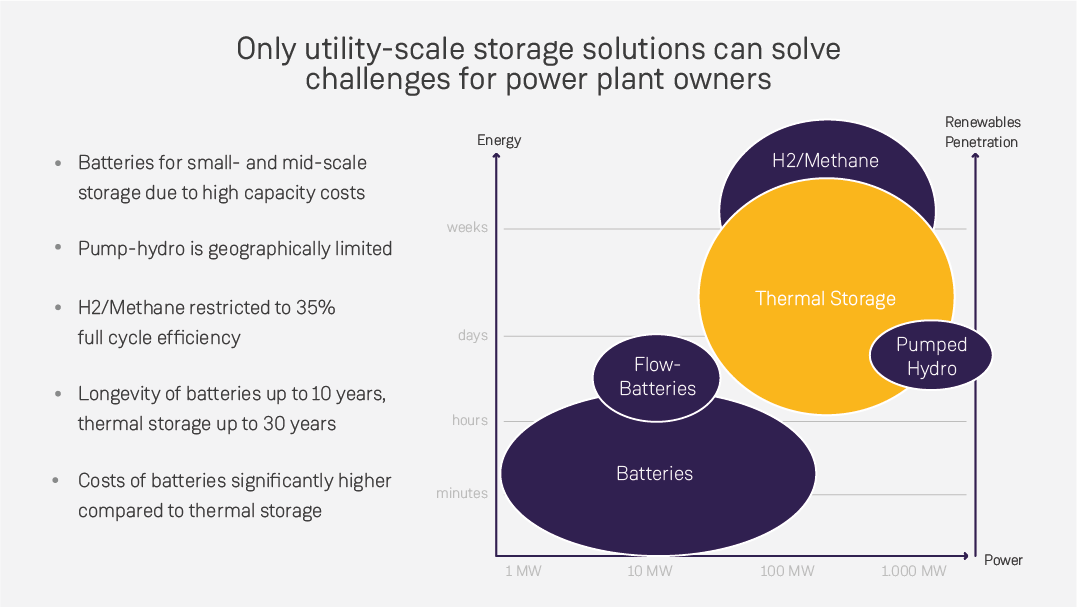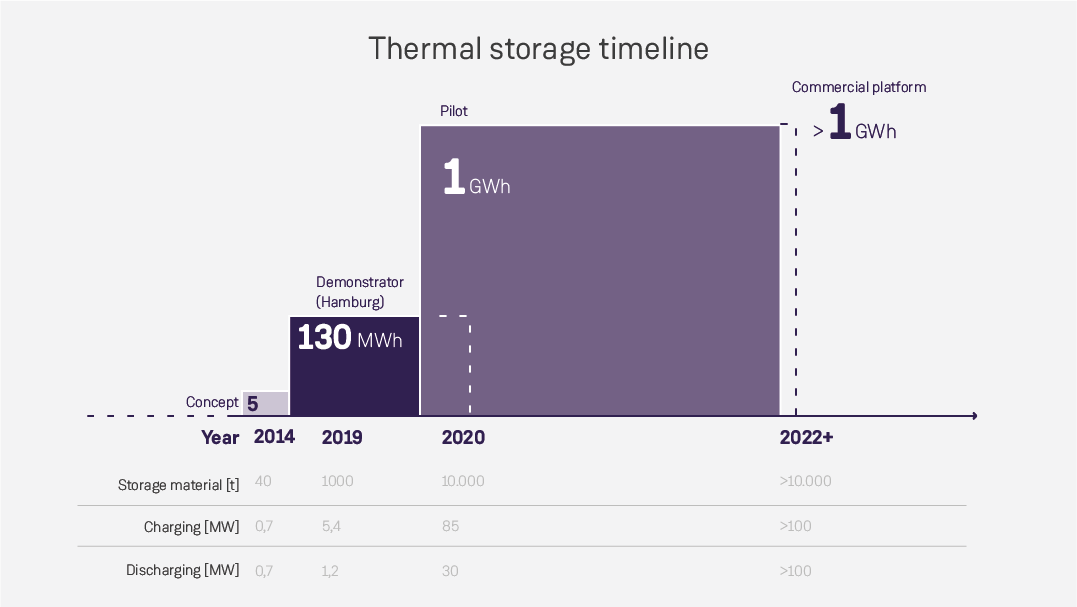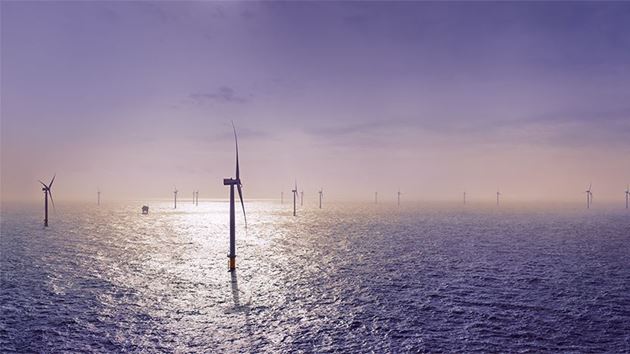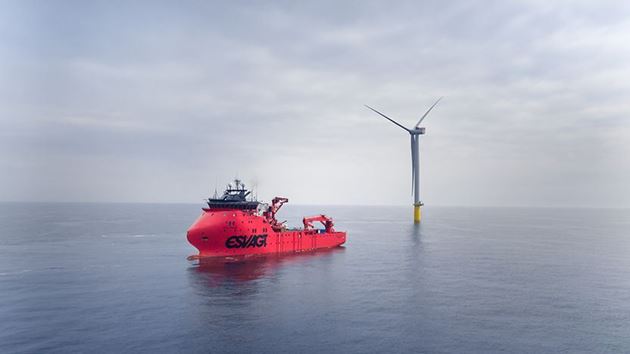
Energy storage
Recharging the energy transition
If you would like to know more about energy storage made of volcano rock, please reach out to our expert team.
ETES@siemensgamesa.comThe big picture
Electricity starts our mornings and charges our devices. It powers industries and lights our nights. It is even set to increasingly run our cars. It is self-evident, yet the system has been changing at a rapid pace if we look back at the past few decades:
- Power Generation: We are building an entirely new renewable energy system, from scratch!
- Transmission: With breakthroughs like high-voltage and off-grid solutions, we’ve made it easier to bring power to those who need it.
- Consumption: it’s incredible how much we have improved at using electricity more efficiently, thanks to digital technology like ‘smart buildings’, and industrial demand-side management.
- On top of all that, electricity today is more reliable than ever before.
But: We are reliant on a grid that was built decades ago, back when large power plants burned fossil fuels as if there was no tomorrow.
Since renewable energies have grown and conventional sources of power keep phasing out, we are faced with a constant problem: The sun does not always shine, and the wind does not always blow – but the electricity grid is a fragile system in which supply and demand must be equal at all times.
Flexibility is needed to adjust to the variations in energy demand, such as people’s daily patterns, as well as the fluctuation in supply coming from renewable energies. When there is more supply than demand, such as at night when cheap power plants continue to operate, or during periods when the wind produces more power than can be consumed, the surplus electricity can be stored in order to achieve greater efficiency. And as soon as the demand exceeds the supply again, the storage facilities can feed the stored energy back into the grid.
Energy storage plays an important role in this balancing act and makes the grid system more stable and reliable.
Decoupling generation and consumption of fluctuating renewable energy is an essential contribution to the energy system transformation. We therefore need cost-effective, efficient and scalable energy storage systems.
Energy storage today
We have pointed out that energy storage systems are a central pillar for the success of the energy revolution. They contribute significantly to the integration of renewable energies and ensure a stable grid.
According to the European Commission, existing energy storage technologies have evolved considerably in recent years. The traditional pumped hydro storage is currently the most mature technology and counts for over 97% of the existing electricity storage capacity, with an estimated total of 171 GW in 2014.
But alternatives, such as batteries, compressed air, heat storage and hydrogen are catching up. Still, technological progress and cost competitiveness remain essential for large scale deployment.
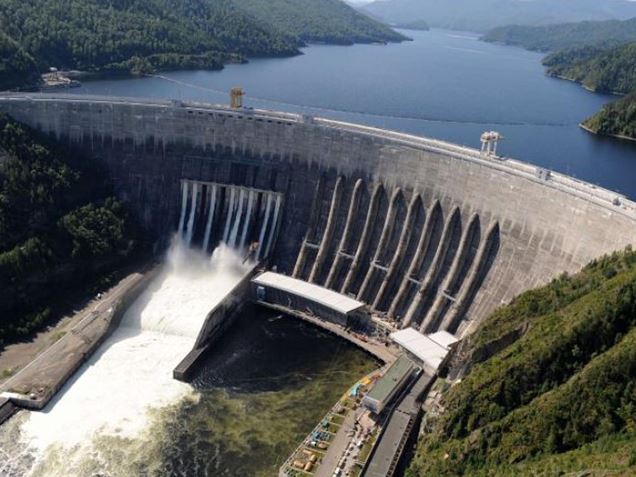

When considering energy storage technologies to help tackle the challenges, the best one will ideally have the following characteristics:
- utilizes existing power infrastructure
- simple and reliable
- cost-effective
- large-scale-adaptable
- no geographic limitations (for example to mountains, like hydro storage)
- environmentally friendly
Batteries are an important part of our energy future. But it is obvious that they cannot meet all these requirements.
Coming up next
A decade ago, we started working on a low-cost, large-scale solution that turns excess electricity into heat: Electrical Thermal Energy Storage (ETES). It is based on similar ideas by the Swedish American John Ericsson all the way back in the 1850s.
Thousands of tons of crushed volcanic stones are heated to 600°C and higher with a kind of giant “hairdryer” that converts electricity – generated for example from renewables – into heat. Well insulated, the stones can stay hot for weeks. If electricity is needed, a classic steam turbine converts the heat back into electricity. With costs of about €100 per kWh, this technology is way more affordable than any gas power plant or battery system.
Theoretically there is no upper limit to the potential size of a project. Based on the knowledge we have today, a 1 GWh storage project could be commissioned as early as 2025.
This principle not only works in combination with renewable energies, but can also transform conventional power plants. Thermal energy storage can make the dismantling of old power plants unnecessary. Wherever nowadays gas, coal or nuclear power generate heat, there is room for volcanic stones. The rest of the components, the electrical and civil infrastructure, can be reused. With this “brownfield” approach, an old power plant can become a modern, giant energy storage.
Storage can likewise optimize energy intensive industries, such as the chemical industry or metal industry. Many energy-intensive processes must be powered as stable and continuous as possible in order to reach a certain product quality. Those processes can hardly react to any price signals at short-term electricity markets. ETES provides the flexibility to react to fluctuating prices while maintaining highest product quality. Steel companies, for example, could decouple their fuel supply from their electricity generation: a way to store the heat from flue gases and use it to generate electricity and sell it at peak prices.
I am an engineer and therefore believe that everything will be possible in the future - because the human mind is ingenious. But for the time being, thermal storage is the best idea for balancing the grid in a clean way.
Outlook
In June 2019, we inaugurated the first demonstration project in Hamburg, Germany. Using 1,000 tons of rock, it can provide 130 MWh of electric energy. A 1.5 MW generator produces energy for up to 24 hours and supplies around 1,500 German households.
Together with a small group of partners and scientists we will test the facility for one year: What are the most efficient settings? How long can the electric heaters stay switched on? At what load does the steam turbine work most seamlessly? All to obtain the optimal output and to develop the technology further.
After completion of the testing phase, we plan to realize a pilot of around 1 GWh, probably in partnership with a strategic partner followed by the commercial roll-out.
Further reading
